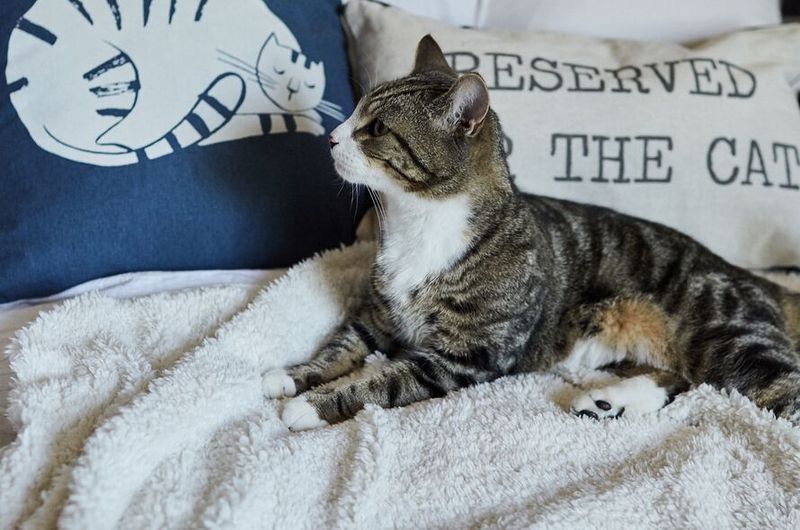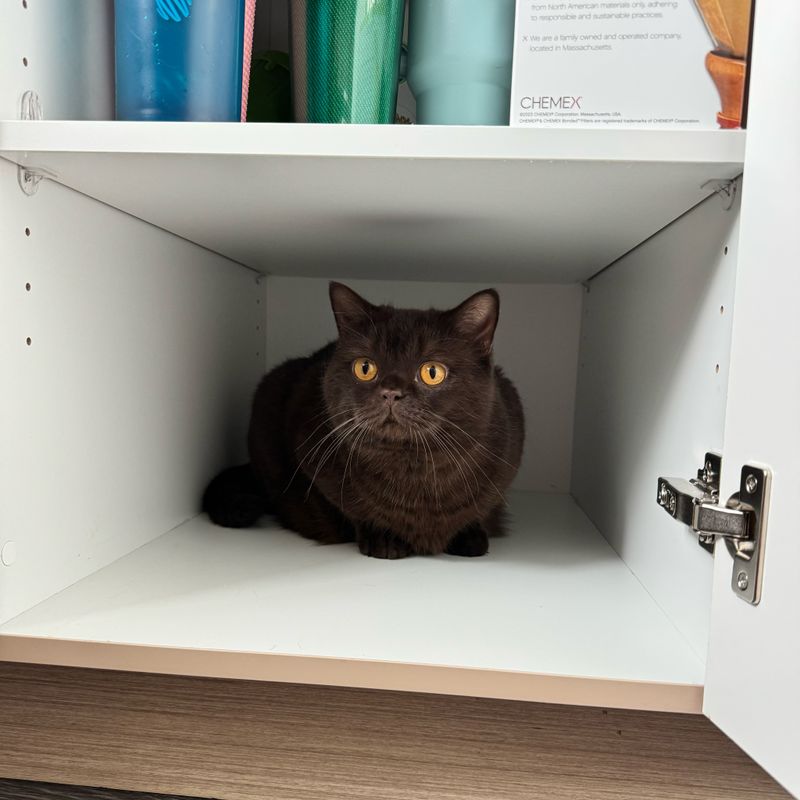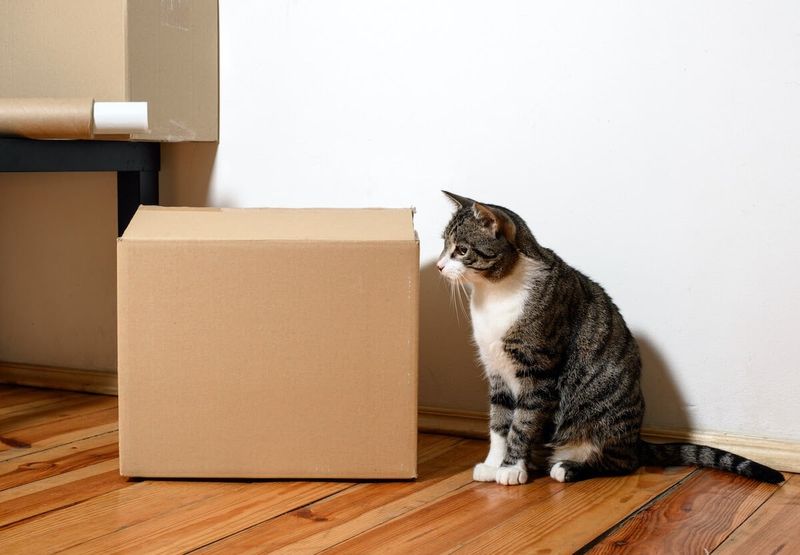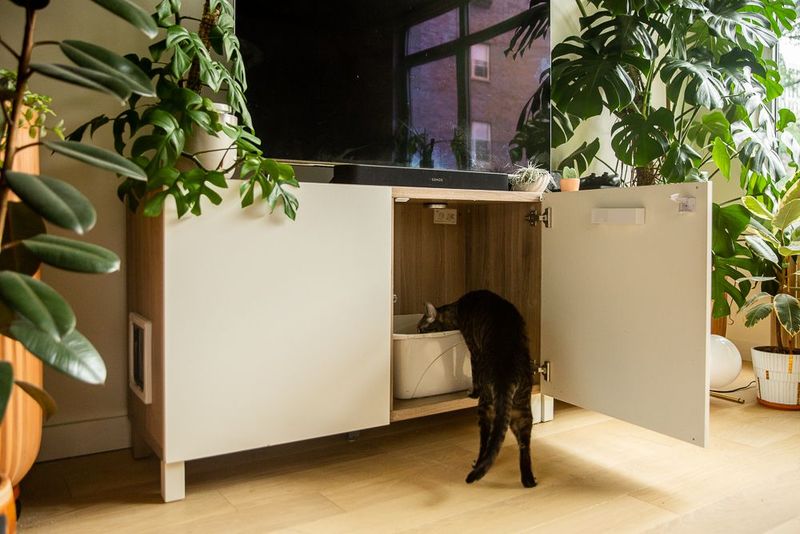📖 Table of Content:
- 1. Create a Safe Room First
- 2. Maintain Familiar Scents
- 3. Stick to the Old Routine
- 4. Gradual Space Introduction
- 5. Provide Extra Hiding Spots
- 6. Update Identification Information
- 7. Extra Playtime and Attention
- 8. Consider Temporary Appetite Changes
- 9. Delay Meeting New Pets
- 10. Be Patient With Litter Box Issues
Relocating to a new home can be a challenging experience, especially for cats. These creatures of habit rely heavily on familiar environments and consistent routines to feel secure. A sudden change in surroundings can cause anxiety and confusion for them.
Cats often need additional care and patience during transitions to help ease their stress. Providing a stable and comforting atmosphere becomes essential in helping them adapt. Understanding their needs can make the adjustment period smoother for both the cat and the owner.
Creating a calm environment and offering reassurance allows cats to regain a sense of safety. Small, thoughtful steps can significantly reduce their anxiety during this time. Supporting them carefully helps restore their confidence in their new home.
1. Create a Safe Room First
Set up one quiet room with all your cat’s essentials before bringing them home. This sanctuary should include their litter box, food, water, bed, and favorite toys. A small space helps cats feel more secure than having immediate access to the entire house.
Cats need time to process new smells, sounds, and sights without feeling overwhelmed. Let your cat explore this base camp at their own pace, which might take several days. Some shy cats may hide under furniture initially – this is a normal adjustment behavior.
Visit regularly but respect their need for space during this transition period.
2. Maintain Familiar Scents
Bring your cat’s bedding, toys, and scratching posts from your previous home without washing them. These items carry comforting scents that provide continuity during a chaotic time. The familiar smells will help your cat recognize that this strange place contains elements of their territory.
Rub a soft cloth around your cat’s face to collect their facial pheromones, then wipe this cloth on baseboards and furniture corners at cat height. This technique marks the new space with their scent, making it feel more like their territory.
Consider using synthetic feline pheromone products like Feliway to create a calming atmosphere.
3. Stick to the Old Routine
Cats find great comfort in predictable daily schedules. Feed your cat at the same times you did in your previous home, even if it means setting alarms on moving day. Maintaining consistent mealtimes gives your stressed cat something reliable to count on.
Play sessions, grooming, and bedtime routines should also follow familiar patterns. If you typically brush your cat after dinner or play with a wand toy before bed, continue these activities in your new home.
The structure of a consistent routine provides security and helps your cat understand that while the location has changed, the important aspects of their life remain the same.
4. Gradual Space Introduction
After your cat seems comfortable in their safe room, slowly introduce them to the rest of the house one room at a time. Open the door and let them explore at their own pace without forcing the issue. Some cats need just a day or two before wanting to venture out, while others might take weeks.
Watch their body language during these explorations. A confident cat will walk with tail up, ears forward, and will sniff with interest. A stressed cat will have a low tail, flattened ears, and may slink along walls.
Return them to their safe room if they seem overwhelmed, and try again later with a smaller area.
5. Provide Extra Hiding Spots
Cats naturally seek elevated perches and concealed spots when feeling insecure. Set up additional hiding places throughout your new home using cardboard boxes, cat trees, and cozy beds in quiet corners. These retreats give your cat options to escape when feeling overwhelmed.
Covered beds or carriers with doors left open make excellent sanctuaries. Place some in quiet areas and others where family activity happens, so your cat can choose their comfort level of social interaction.
Never pull your cat from a hiding spot, as this creates negative associations with both you and the new environment. Let them emerge when ready.
6. Update Identification Information
The risk of a cat escaping is highest during and right after a move. Before moving day, ensure your cat’s microchip information is updated with your new address and phone number. Cats who escape in unfamiliar territory may become disoriented and travel much farther than you’d expect.
Get a new ID tag with current contact details to attach to your cat’s collar. Even indoor-only cats should wear breakaway collars with identification during this transition period.
Take clear photos of your cat from different angles to use in lost pet posts if needed, and research local lost pet resources in your new neighborhood.
7. Extra Playtime and Attention
Physical activity helps reduce stress hormones and builds positive associations with the new environment. Schedule several short play sessions throughout the day using interactive toys that mimic prey movements. Wand toys with feathers or mice attachments are particularly engaging for most cats.
These play sessions serve multiple purposes: they provide exercise, distraction from anxiety, and strengthen your bond during a challenging transition. Watch for playful body language like a twitching tail tip and focused attention.
Follow play with a small treat or meal to complete the natural hunt-catch-eat cycle that satisfies your cat’s instincts and creates positive feelings about their new territory.
8. Consider Temporary Appetite Changes
Many cats eat less during times of stress. Monitor your cat’s food intake but don’t panic if they skip a meal or two. Offer especially appealing foods like wet food warmed slightly to enhance aroma, or sprinkle freeze-dried treats on top of regular meals as encouragement.
Place food dishes in quiet, low-traffic areas where your cat feels secure enough to eat. Some cats prefer elevated feeding stations that provide better visibility of their surroundings while eating.
If your cat refuses food for more than 24 hours or shows other concerning symptoms like lethargy or vomiting, contact your veterinarian, as prolonged food avoidance can lead to serious health issues.
9. Delay Meeting New Pets
If you’re moving into a home with existing pets, keep them completely separated from your cat initially. Both your newcomer and resident animals need time to adjust to the changed circumstances before facing additional social stress.
After several days, begin scent exchanges by swapping bedding between the animals or rubbing each with the same towel. This familiarizes them with each other’s smell before visual contact. Next, allow them to see each other through a baby gate or a cracked door.
Only proceed to supervised face-to-face meetings once both animals show calm curiosity rather than fear or aggression. This gradual introduction process may take weeks but prevents relationship-damaging conflicts.
10. Be Patient With Litter Box Issues
Stress often affects litter box habits, so prepare for possible accidents during the adjustment period. Place multiple litter boxes around your new home, using the same type of litter from your previous residence. The familiar texture and smell will encourage proper elimination behaviors.
Keep litter boxes in quiet, accessible locations away from noisy appliances or high-traffic areas. If your cat seems reluctant to use the box, try placing it in the exact same relative location as in your old home (like in a bathroom corner).
Clean any accidents thoroughly with enzymatic cleaners designed specifically for pet urine, without scolding your cat, as punishment only increases stress and worsens the problem.










